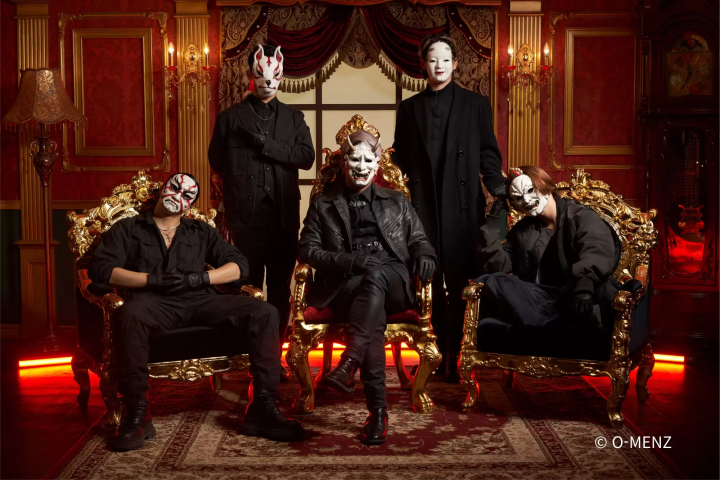[Nishinomiya City] Shinjuji Temple is a temple with a slightly shocking name. When I went there, it was such a wonderful place.
![[Nishinomiya City] Shinjuji Temple is a temple with a slightly shocking name. When I went there, it was such a wonderful place.](https://resources.matcha-jp.com/resize/720x2000/2023/12/20-158517.webp)
Kan-no-ji Temple. The name of this temple may seem a bit scary or shocking when you hear it for the first time, but it's actually not at all. It is a scenic temple located halfway up Mt. Ko, a cute round mountain that seems to nestle into Mt. Rokko, and is also the 21st sacred site in the New Saigoku region.
-
Table of Contents
- The symbol of Nishinomiya, the round and cute Mt. Kozan
- What is the origin of the name, Shinjuji Temple?
- I visited during the hydrangea blooming season.
- In fact, you can also see the Yodogawa fireworks, a little-known night view spot.
- basic information
The symbol of Nishinomiya, the round and cute Mt. Kozan
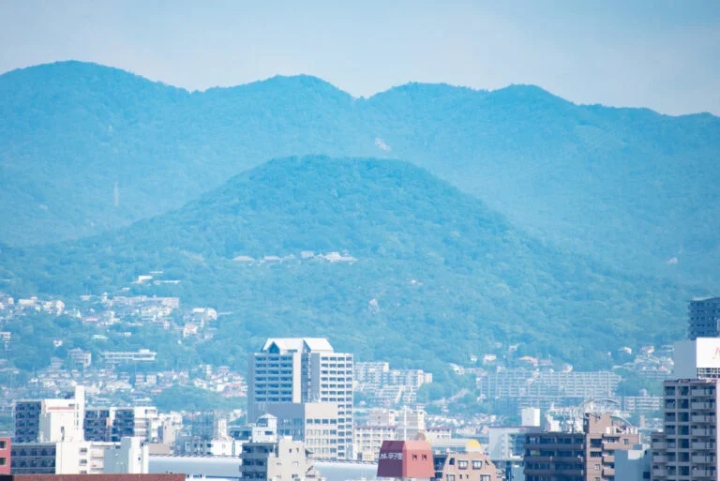
Kabutoyama, shaped like fried rice topped with a ladle, is said to be the symbol of Nishinomiya City, Hyogo Prefecture. At 309 meters above sea level, it is about 9 meters higher than Abeno Harukas and can be seen from almost anywhere in the southern part of the city. I live in a room on the 9th floor by the sea in Nishinomiya, and when I step out the front door, I can clearly see Mt. Kosan in front of me, and Jinjuji Temple halfway up the mountain.
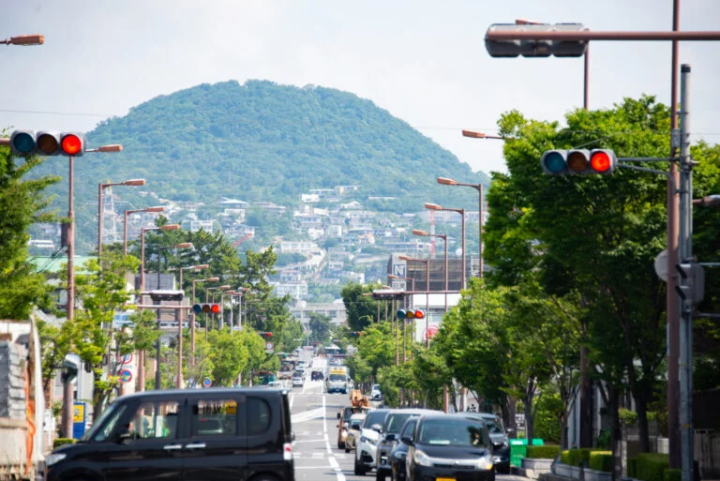
Mt. Rokko and Mt. Ko may appear to be one, but they actually have different origins. Mt. Rokko is a mountain that rose due to tectonic movement, but Mt. Ko is a volcano. The current Mt. Kozan is said to have erupted 12 million years ago, after which only the hard part near the crater remained.
There are also various theories about the origin of the name "Koyama". Empress Jingu buried the golden helmet in prayer for peace. A long time ago, two large pine trees grew there, and the shape of the mountain resembled a helmet. The ``Mountain of the Gods'' (Ko-no-yama) became ``Kou-no-yama'' and became ``Ko-san.'' It all seems real.
By the way, there is a theory that when Mt. Rokko was viewed from around Kamimachi Plateau, when most of Osaka City was still on the sea, the ``mountain on the other side of the sea to the west'' became ``Mt. Rokko'' after passing through ``Mt. there is. It is said that ``Mukogawa'' also got its name from this process. I don't know what's really going on here, but it's kind of interesting.
What is the origin of the name, Shinjuji Temple?
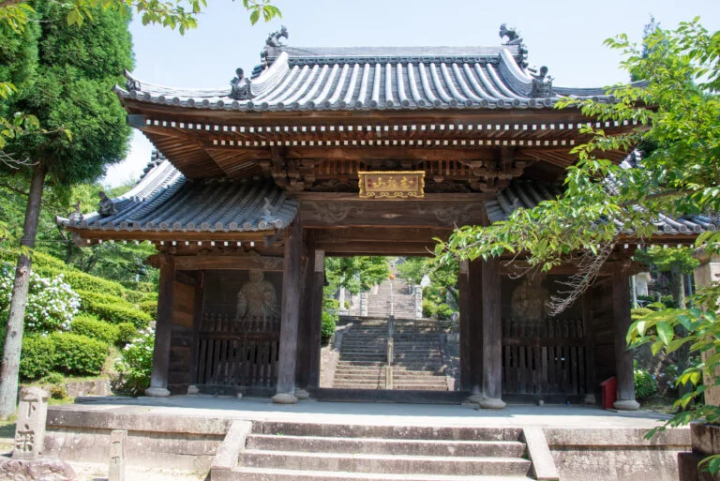
Now, regarding the origin of the name Jinju-ji Temple, of course it does not mean ``cursing the gods'' or something scary. In the first place, this ``ju'' means ``curse'' of ``spell.'' It's a "God's spell". According to the leaflet of Jinjuji Temple, ``This temple was named Jinjuji Temple (a temple with a mysterious and powerful power similar to that of a god) because Mt. Kou was believed to be a mysterious mountain of gods.''
It also says, ``Kanno is a divine spell found in the Heart Sutra, which means a mantra.'' Jinjuji Temple is the special head temple of the Omuro sect of the Shingon sect, also known as Kozan Daishi, so when you think about it, the name Shinjutsu seems quite natural.
I visited during the hydrangea blooming season.
Turn off Prefectural Route 82 at the Washinji-cho intersection and head east along Kozan Daishi-michi. If you look at Kitayama Reservoir on your right, you will find a parking lot a little further. Niomon is located a little south across the road. I visited on June 19th, and the hydrangeas were blooming beautifully amidst the moist greenery during the rainy season.
After passing through the gate and crossing a busy road, there are stairs leading straight towards the mountain. You have to climb about 100 stone steps to reach the shrine grounds, which is located halfway up Mt. Kosan, about 200 meters above sea level.
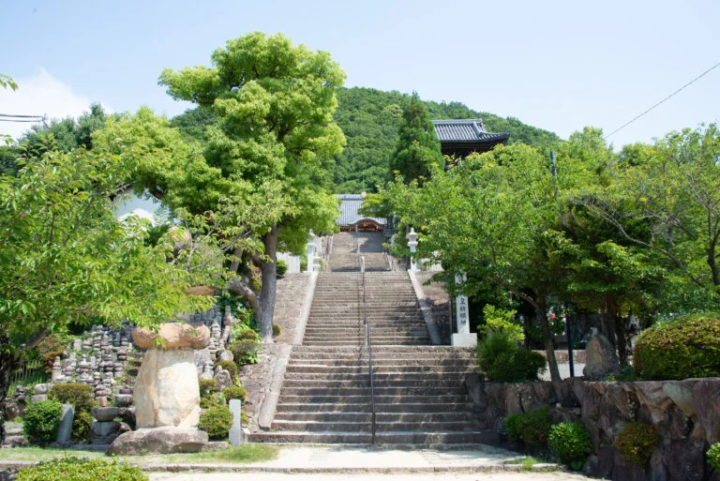
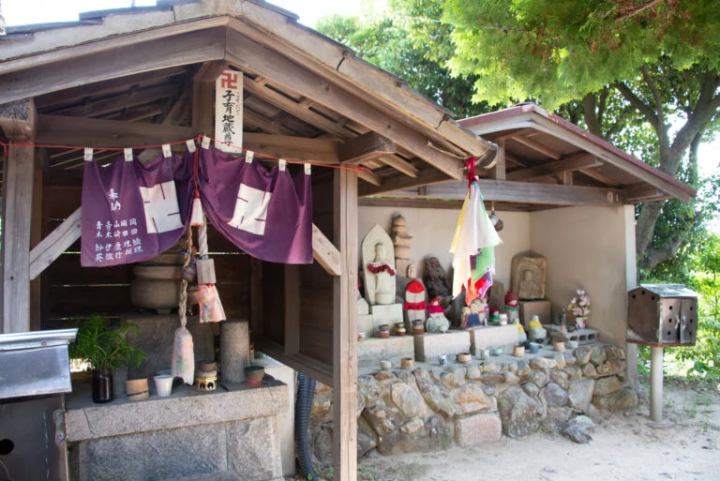
There is a magnificent temple bell in the bell tower. You can ring the temple bell, which is engraved with the words ``Tenka Wajun'' in the handwriting of His Imperial Highness Prince Takamatsu, for 50 yen.
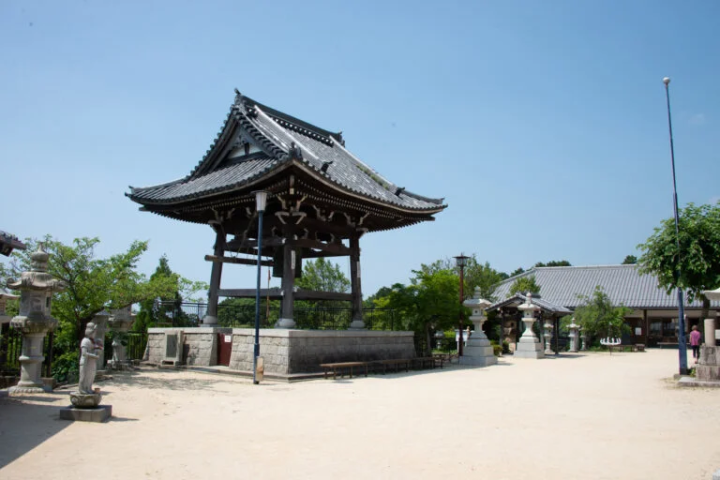
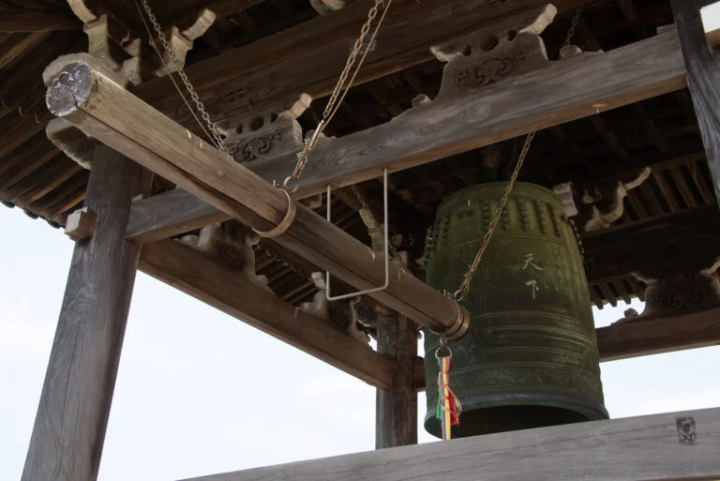

In the front, from left to right, are Daishi-do, Benten-do, Hondo, Fudo-do, and Ossuary. A seated statue of Kobo Daishi is enshrined in the Daishi-do hall. It is a nationally designated important cultural property and is said to have been created in the late Kamakura period. This is what Kobo Daishi looked like when he was 58 years old.
A seated statue of Nyoirin Kannon is enshrined in the main hall. It is a nationally designated important cultural property and is also known as the Yutsu Kannon. It is a secret Buddha statue that is said to have been carved by Kobo Daishi. Along with the Kannon statues at Kanshin-ji Temple in Kawachi and Muro-ji Temple in Yamato, it is called one of the three Nyoirin rings in Japan.
Every year on May 18th, the Hibutsu Kaicho and Yutsu Kannon Festival is held. A statue of Fudo Myoo is enshrined in Fudo-do Hall. This is also a nationally designated important cultural property.
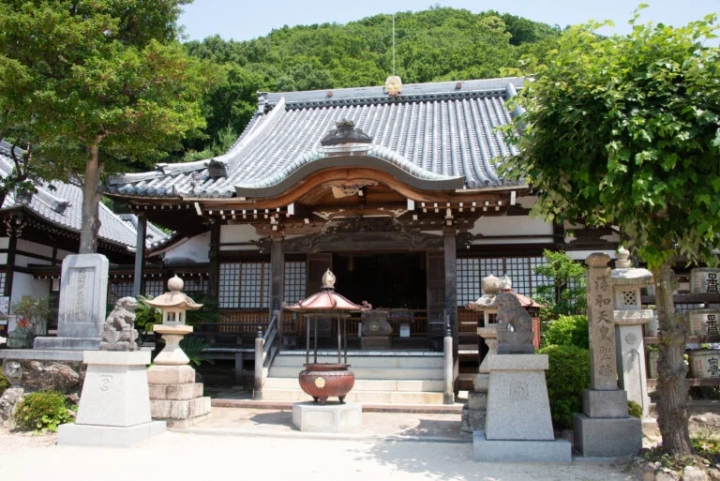
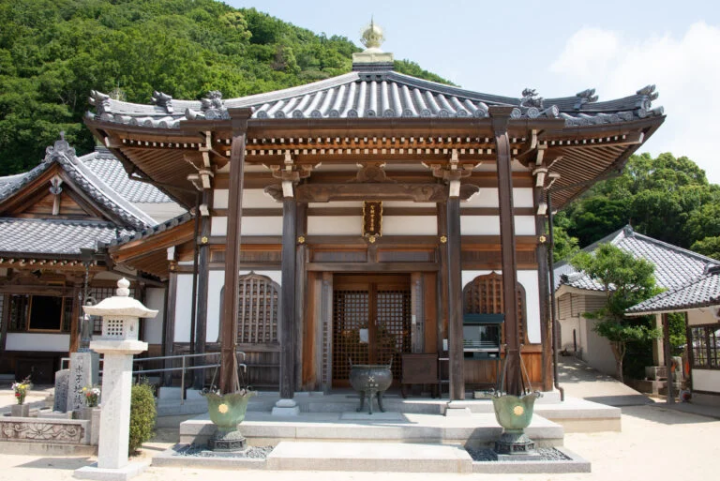
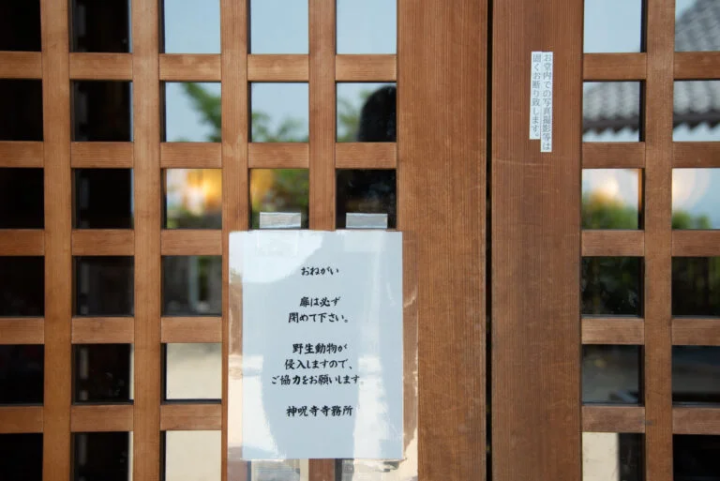

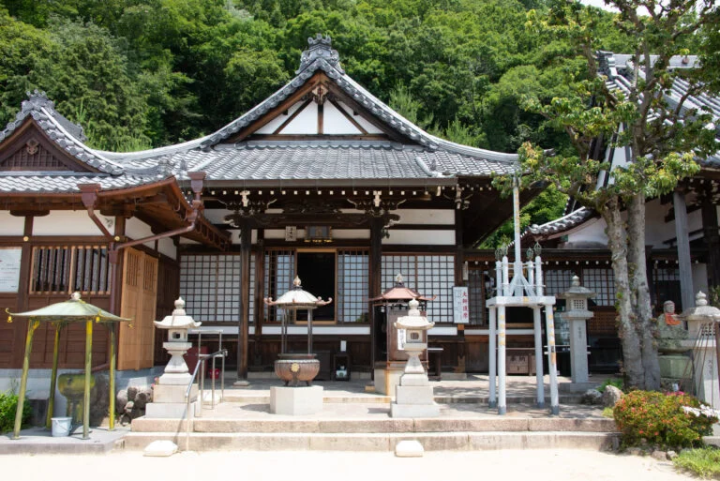
In front of Daishi-do Hall, there is a small pine tree called Sanko no Matsu. The Sanko pine tree located between Mieido and Kondo in the Danjo Garan of Mt. Koya is said to be the inspiration for Kobo Daishi's creation of Mt. Koya, and is a rare tree with three pine needles.
It is said that if you pick up the pine needles and hold them, you will receive blessings. The Sanko pine tree here is also divided into three pine trees.


In fact, you can also see the Yodogawa fireworks, a little-known night view spot.
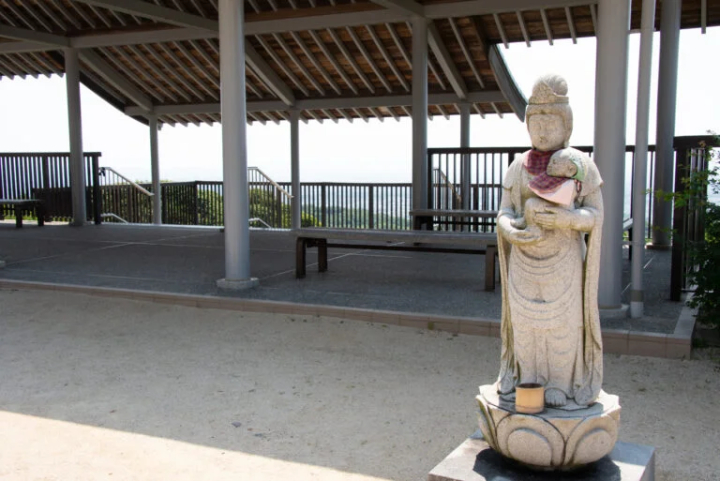
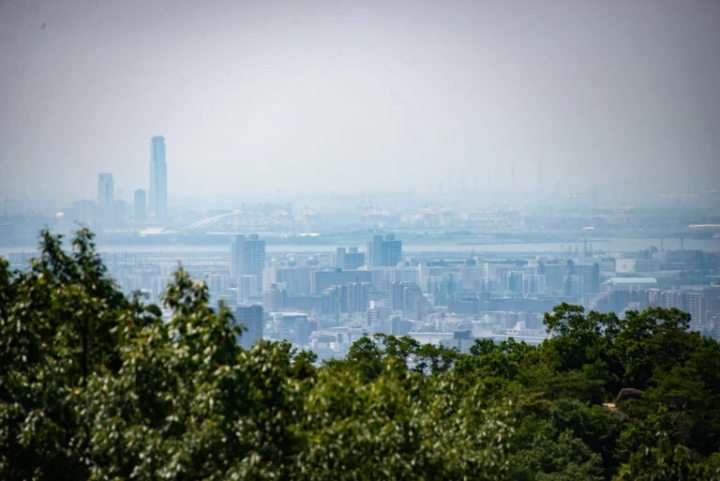

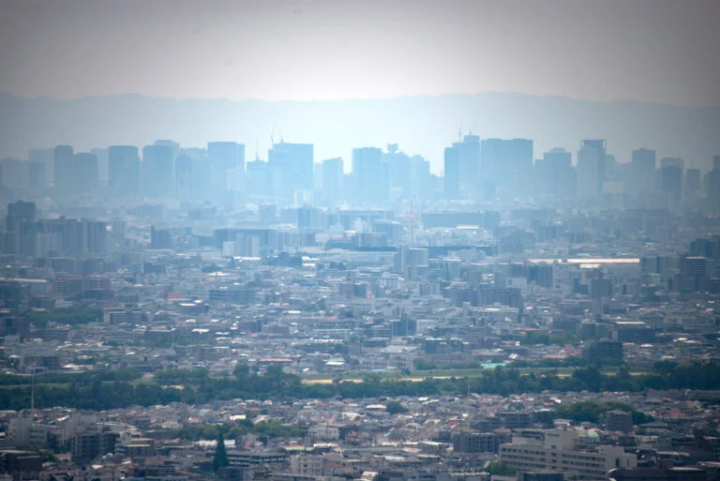
There is an observation deck on the east side of the precincts. From a height of 200 meters above sea level, you can enjoy a panoramic view as far as Mt. Ikoma. In fact, this is a well-known spot not only for the night view of Osaka, but also for the Naniwa Yodogawa Fireworks Festival held every August.
Of course, it's far away, but it's clearly visible right in front of you, and there are people who watch and photograph it from here every year. That means you'll probably be able to see the Inagawa and Expo City fireworks as well.

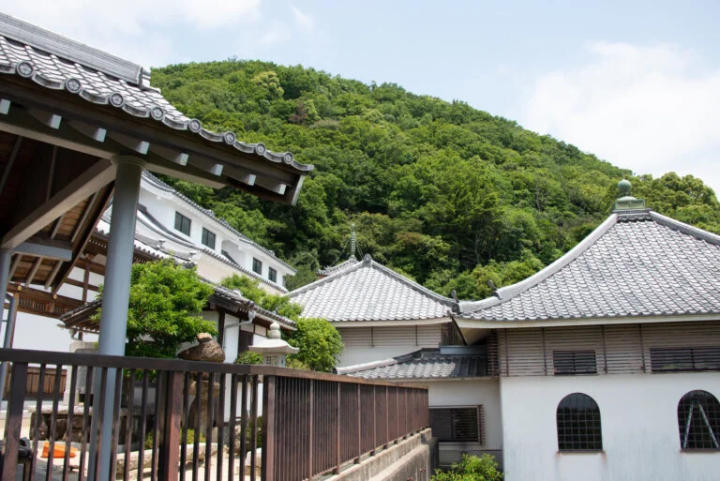
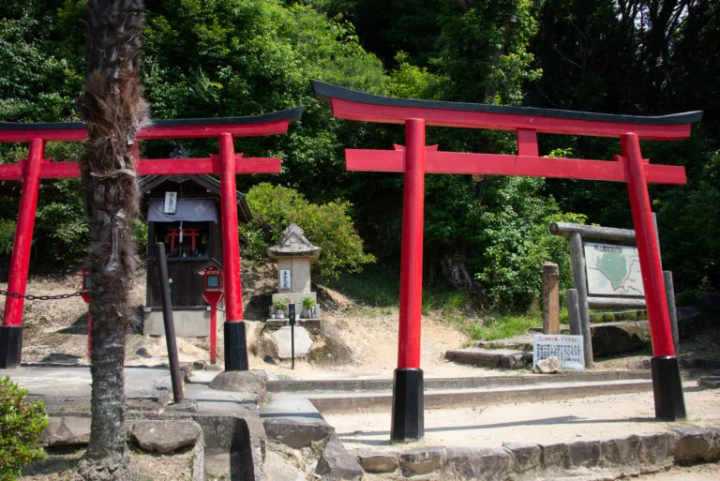

![[Nishinomiya City] Shinjuji Temple is a temple with a slightly shocking name. When I went there, it was such a wonderful place.](https://resources.matcha-jp.com/resize/720x2000/2023/12/20-158549.webp)
If you go further back from the observatory, you will find the trailhead for Mt. Kosan. The elevation difference from here is about 100 meters, so it might be a good hiking course for those with good legs.
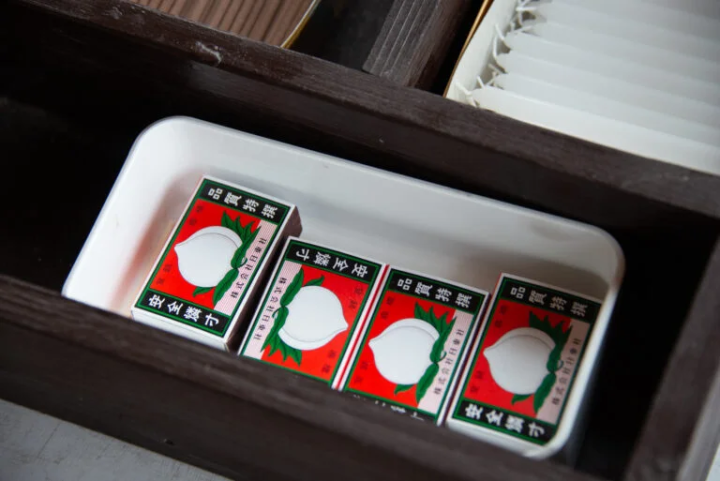
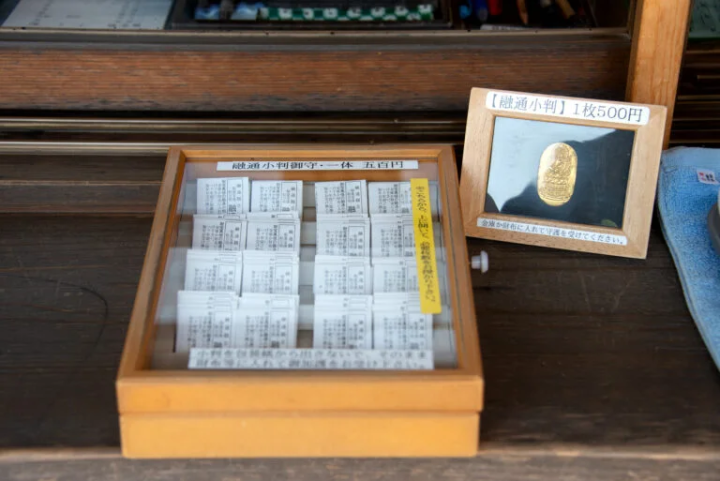

Nishinomiya's landmark, Shinjuji Temple, nestled in Mt. Kosan. It is a scenic and hidden spot. Please come and visit us at least once.
![[Nishinomiya City] Shinjuji Temple is a temple with a slightly shocking name. When I went there, it was such a wonderful place.](https://resources.matcha-jp.com/resize/720x2000/2023/12/20-158555.webp)
(Writer Kojima)
*This article is information as of June 2023. Prices include tax. Product contents and prices may change.
basic information
Shinjuji Temple
Address: 25-1 Kozancho, Nishinomiya City, Hyogo Prefecture
Phone number: 0798-72-1172 (9:00-16:30)
Business hours: [Closing time] 17:00
No regular holiday
Access: 30 minutes by bus from Hanshin Nishinomiya Station (get off at Kozan Daishi-mae)
Parking: Available, 80 regular cars (free)
What are good things and good experiences? There are many characteristics such as having a story to tell, overflowing with the thoughts of the creator, having a history, and being loved by the locals. Have you ever come across a special thing or experience that made you want to tell someone about it? And as a result of telling, someone new leads to something. We think that's what "good" is all about. In order to deliver such encounters to our customers, we discover Hyogo's good things based on the concept of "talk, communicate, and connect", and provide information that will shorten the emotional distance between customers and the region of Hyogo Prefecture.
The contents on this page may partially contain automatic translation.































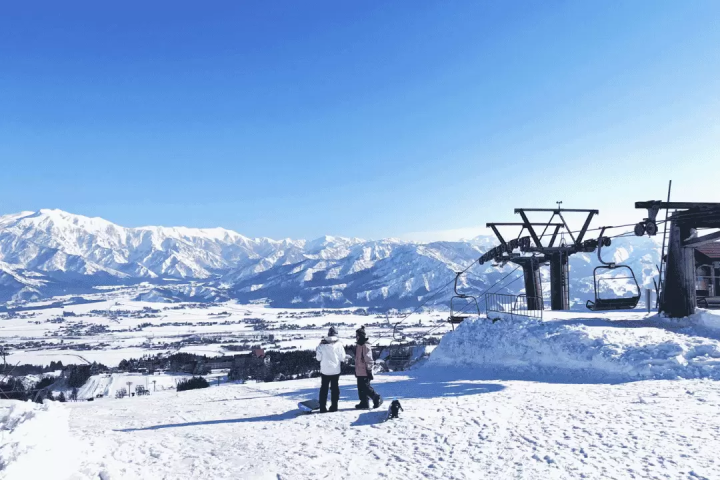
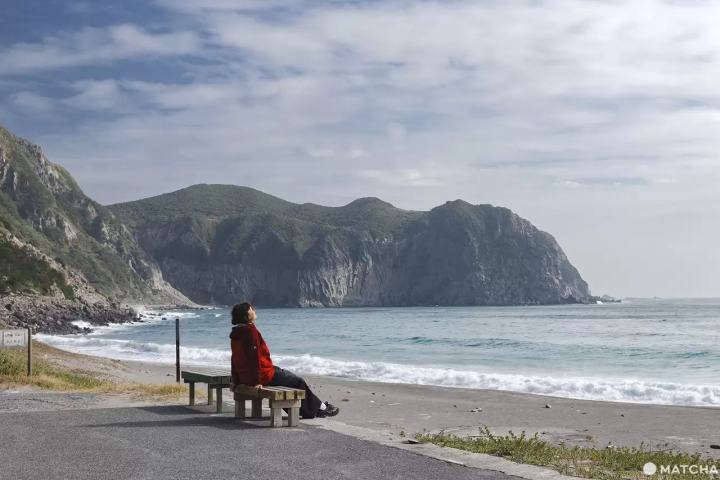
![Deep dive into Japanese brands! A tour of famous leather shoe stores with GENSEI & Nin [Tohritsu Shoes Edition]](https://resources.matcha-jp.com/resize/720x2000/2025/12/18-253283.webp)

